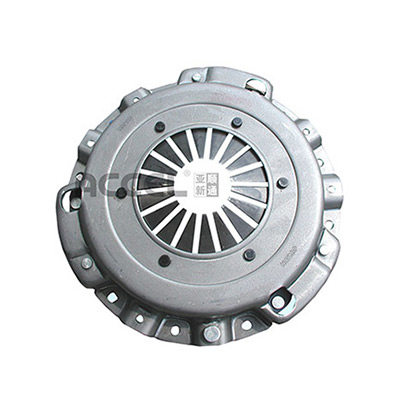- Arabic
- French
- Russian
- Spanish
- Portuguese
- Turkish
- Armenian
- English
- Albanian
- Amharic
- Azerbaijani
- Basque
- Belarusian
- Bengali
- Bosnian
- Bulgarian
- Catalan
- Cebuano
- Corsican
- Croatian
- Czech
- Danish
- Dutch
- Afrikaans
- Esperanto
- Estonian
- Finnish
- Frisian
- Galician
- Georgian
- German
- Greek
- Gujarati
- Haitian Creole
- hausa
- hawaiian
- Hebrew
- Hindi
- Miao
- Hungarian
- Icelandic
- igbo
- Indonesian
- irish
- Italian
- Japanese
- Javanese
- Kannada
- kazakh
- Khmer
- Rwandese
- Korean
- Kurdish
- Kyrgyz
- Lao
- Latin
- Latvian
- Lithuanian
- Luxembourgish
- Macedonian
- Malgashi
- Malay
- Malayalam
- Maltese
- Maori
- Marathi
- Mongolian
- Myanmar
- Nepali
- Norwegian
- Norwegian
- Occitan
- Pashto
- Persian
- Polish
- Punjabi
- Romanian
- Samoan
- Scottish Gaelic
- Serbian
- Sesotho
- Shona
- Sindhi
- Sinhala
- Slovak
- Slovenian
- Somali
- Sundanese
- Swahili
- Swedish
- Tagalog
- Tajik
- Tamil
- Tatar
- Telugu
- Thai
- Turkmen
- Ukrainian
- Urdu
- Uighur
- Uzbek
- Vietnamese
- Welsh
- Bantu
- Yiddish
- Yoruba
- Zulu
نومبر . 18, 2024 06:04 Back to list
auto timing belt
Understanding Auto Timing Belts Essential for Your Vehicle's Performance
In the world of automotive engineering, the timing belt plays a crucial role in maintaining the optimal performance of an engine. Often overshadowed by other components, such as the engine itself and the transmission, the timing belt is a critical piece of your vehicle’s anatomy. This article aims to unravel the importance of the timing belt, its functions, signs of wear, and when to replace it to keep your car running smoothly.
What is a Timing Belt?
The timing belt is a rubber or composite belt that connects the crankshaft to the camshaft in an internal combustion engine. It ensures that the engine's valves open and close at the proper times during each cylinder's intake and exhaust strokes. In simpler terms, it synchronizes the rotation of the crankshaft and camshaft, allowing the engine to operate efficiently.
The Function of a Timing Belt
The timing belt is integral to maintaining the vehicle's performance for several reasons
1. Synchronization The timing belt makes sure that the camshaft and crankshaft rotate in harmony. If they fall out of sync, it can lead to serious engine damage, including bent valves or, in some cases, a complete engine failure.
2. Engine Timing Proper engine timing is crucial for optimal performance. The timing belt ensures that the air-fuel mixture enters the combustion chamber at the right time, maximizing combustion efficiency and power output.
3. Components Coordination Besides the camshaft and crankshaft, the timing belt also governs the operation of other components such as the water pump, which aids in engine cooling.
Signs of Wear and Tear
auto timing belt

Over time, timing belts can experience wear and tear due to friction, heat, and environmental factors. Here are some common signs that your timing belt might need replacement
1. Visible Damage Cracks, fraying, or missing teeth on the timing belt are surefire indicators of wear. If you can visually inspect the belt and notice these issues, it’s time for a replacement.
2. Engine Misfire If the timing belt is not functioning correctly, it can lead to engine misfires, poor acceleration, and decreased power.
3. Strange Noises If you hear a high-pitched whine or a ticking sound coming from your engine, it could mean the timing belt is loose or about to fail.
4. Engine Overheating Since the timing belt also controls the water pump, any malfunction can lead to engine overheating.
When to Replace Your Timing Belt
Most manufacturers recommend replacing the timing belt every 60,000 to 100,000 miles, but this can vary depending on the make and model of the vehicle. It’s essential to refer to your owner's manual for guidelines specific to your car. Neglecting to replace a worn or damaged timing belt can result in catastrophic damage and expensive repairs.
Conclusion
The timing belt may be a small component in the grand scheme of a vehicle, but its importance cannot be overstated. By understanding its function, recognizing signs of wear, and adhering to recommended replacement intervals, vehicle owners can avoid severe damage and costly repairs down the line. Regular maintenance and timely replacement of the timing belt can help ensure that your vehicle operates efficiently and effectively for years to come. Remember, an ounce of prevention is worth a pound of cure; taking these small steps can save you from larger issues down the road.
In summary, while you may not think about your timing belt often, keeping it in good condition is vital. Take care of it, and it will take care of your vehicle, contributing to a smoother, more reliable driving experience.
-
Serpentine Belt Use: Reliable Car Belt Replacement and Sizing Solutions
NewsJul.28,2025
-
High Performance Variable Belt Drive for Precise Timing Control
NewsJul.27,2025
-
Buy Serpentine Belt Online – Affordable Prices & Durable Quality
NewsJul.26,2025
-
High-Performance Metric Variable Speed Belts for Industrial Use
NewsJul.25,2025
-
High-Quality Endless Flat Drive Belt for Precision Power Transmission
NewsJul.24,2025
-
High-Performance Serpentine Belt for Car Engines – Durable & Reliable
NewsJul.23,2025

